Bamboo has been used as construction material in a variety of countries and building types for centuries. As a totally natural material that is sustainable and inexpensive as well as flexible and lightweight, bamboo has been growing to be one of the greatest architectural trends of today. Thanks to its unique aesthetic, the use of bamboo offers original and attractive results in modern architecture.
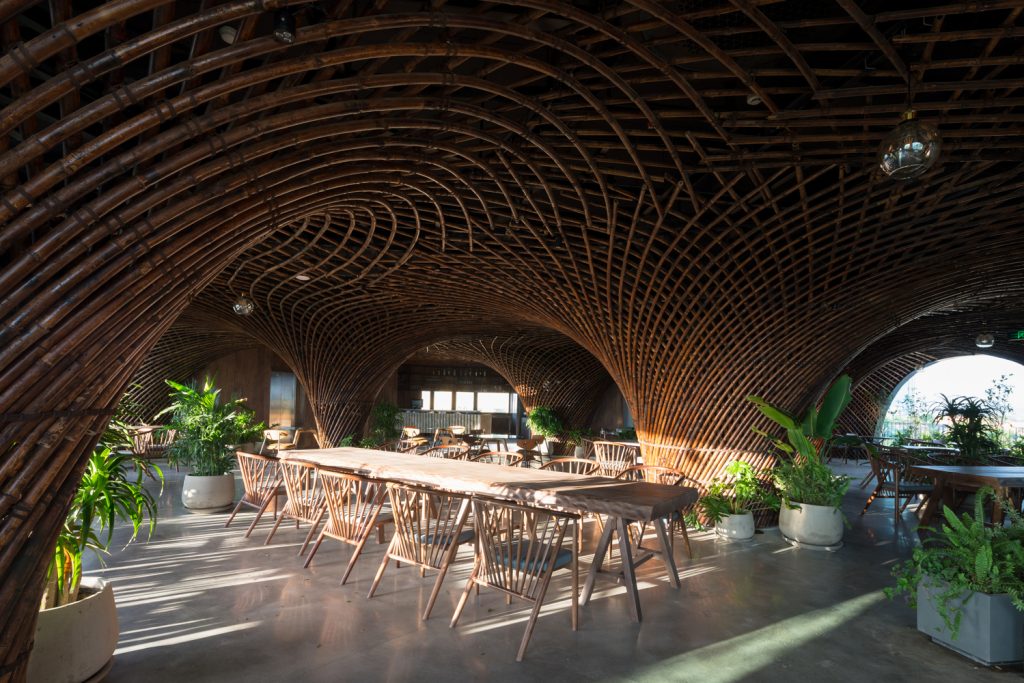
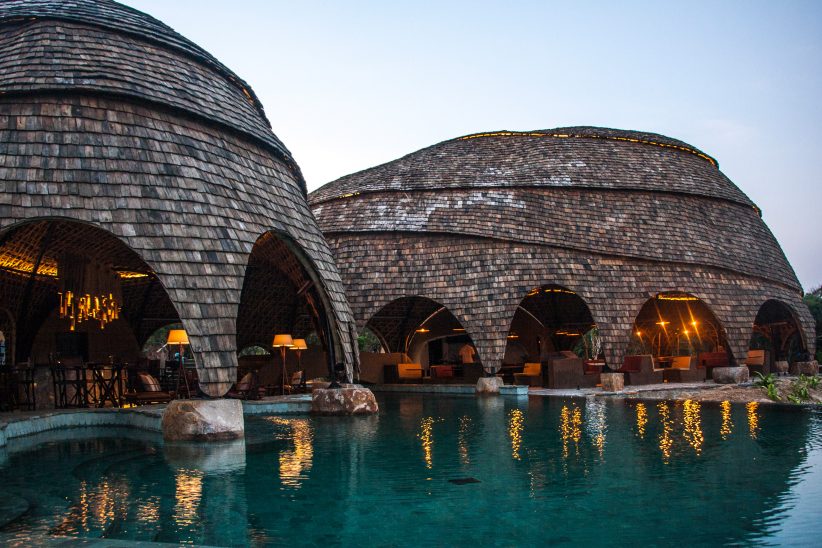
The Wild Coast Tented Lodge by Nomadic Resorts and Bo Reudler Studio
The Wild Coast Tented Lodge near the Yala National Park in the south of Sri Lanka is a series of dwellings designed to mimic rocky outcrops scattered across the local landscape.
Hospitality studio Nomadic Resorts with offices in the Netherlands, Mauritius and South Africa collaborated with Amsterdam-based interior Bo Reudler Studio to create Wild Coast Tented Lodge, the 36-tent safari camp in Sri Lanka. With its domed structures designed to mimic the surrounding landscape, the camp is built from bamboo that was chosen for its sustainable credentials.
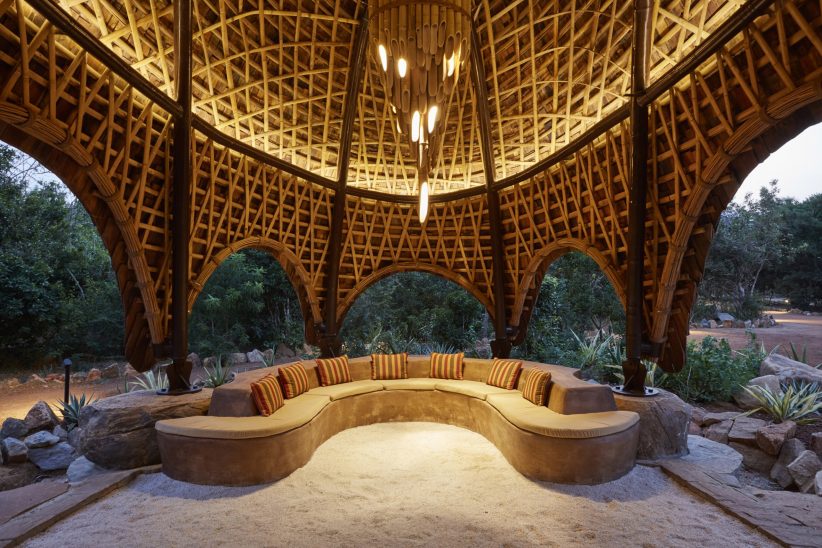
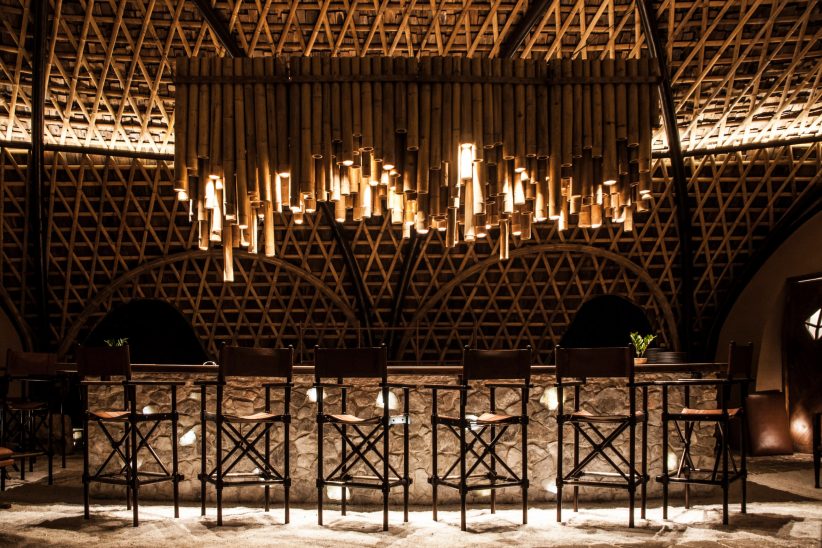
The Wild Coast Tented Lodge by Nomadic Resorts and Bo Reudler Studio
The interior design captures a sense of adventure and local ecological elegance with a contemporary edge. The highlights include seating installations made from a combination of elephant dung and clay and bamboo chandeliers.
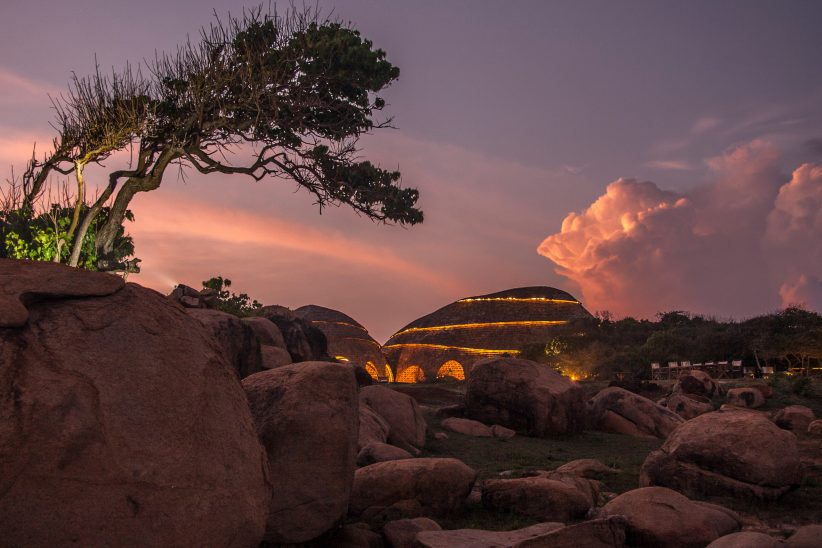
The Wild Coast Tented Lodge by Nomadic Resorts and Bo Reudler Studio
The safari camp has great sustainability features such as solar panels installed on the roofs to produce around 40% of the camp’s energy, waste water utilized for watering and food waste used to produce biogas.
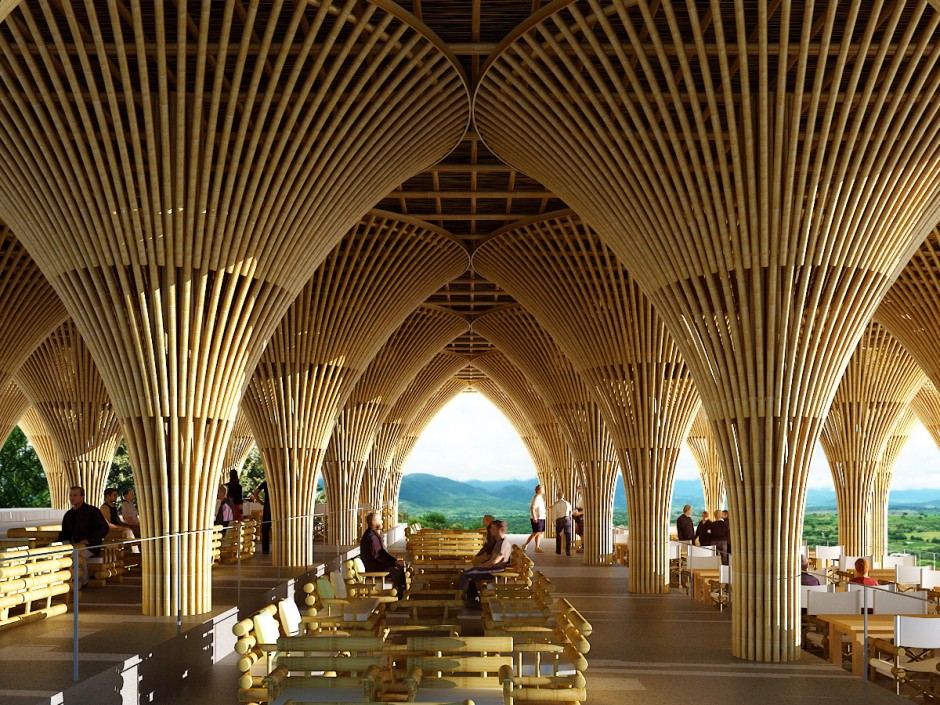
Jardins de Mexico by Vo Trong Nghia Architects
Vietnam-based Vo Trong Nghia Architects often use bamboo in their work and describe the material as the “green steel of the 21st century”. Bamboo is easy to obtain in Vietnam, which reduces construction time and budget. Its light weight allows workers to easily transport and lift the elements as well as install bamboo structure without any additional support.
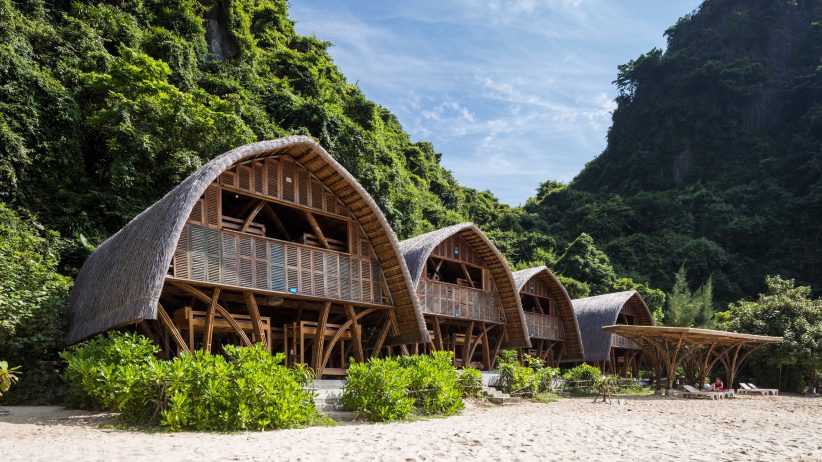
Castaway Island Resort by Vo Trong Nghia Architects
For Castaway Island Resort located in a tiny beautiful island in Cat Ba Archipelago, a well-known tourist destination in Vietnam, the team used bamboo for its ability to integrate with the gulf at the site and be easily removed afterwards without affecting the nature.
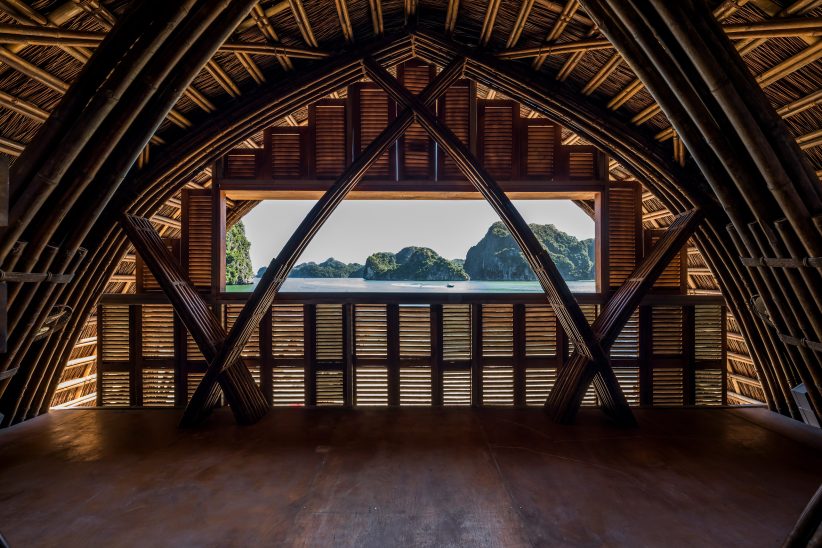
Castaway Island Resort by Vo Trong Nghia Architects
The resort consists of five huts, a restaurant, and a pavilion, all of which are covered with thatched roofs, offering authentic Vietnamese cultural experience for its mainly international guests. The utilized bamboo is treated with a natural traditional method developed at a Vietnamese craft village, which involves soaking the bamboo in mud and smoking afterward.
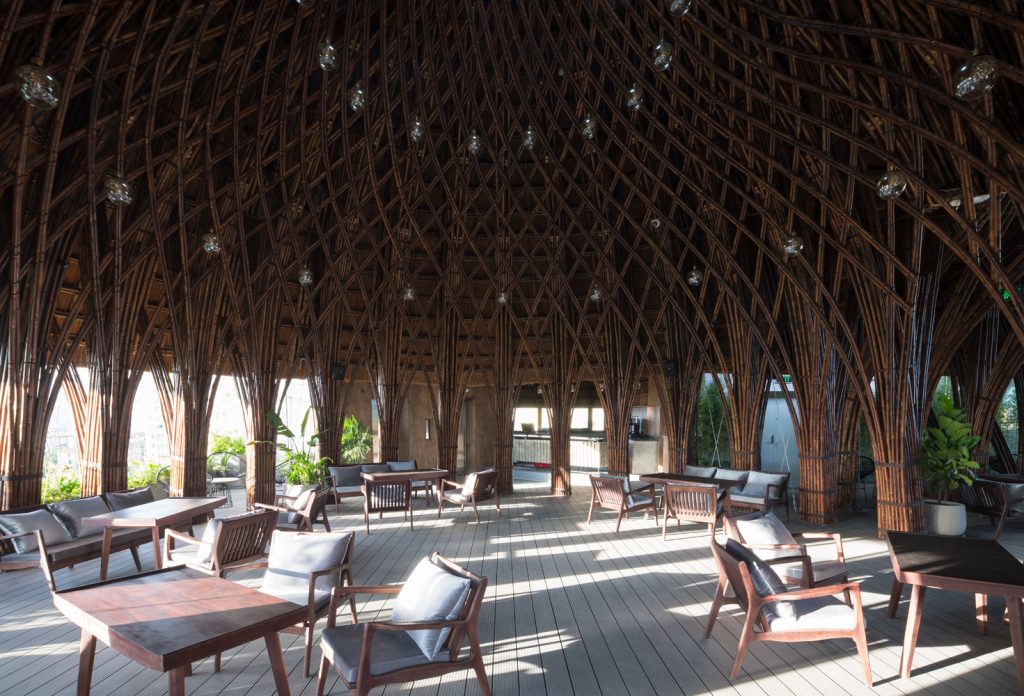
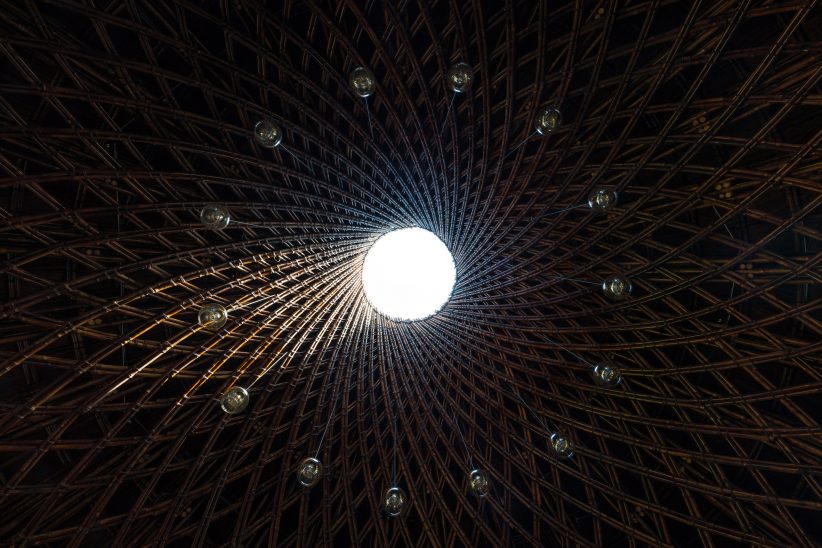
Nocenco café by Vo Trong Nghia Architects (also header image)
For renovation of roof-top Nocenco café in the Vietnamese city of Vinh VTN Architects covered the existing concrete structure of the pre-war building with bamboo material. The enormous dome-like ceiling is also covered with bamboo, which makes the space recognizable from the street for those who pass by from any place in the city. To hide the existing structure the team used 10 bamboo columns which elegantly divide the cave-like space into different private areas.
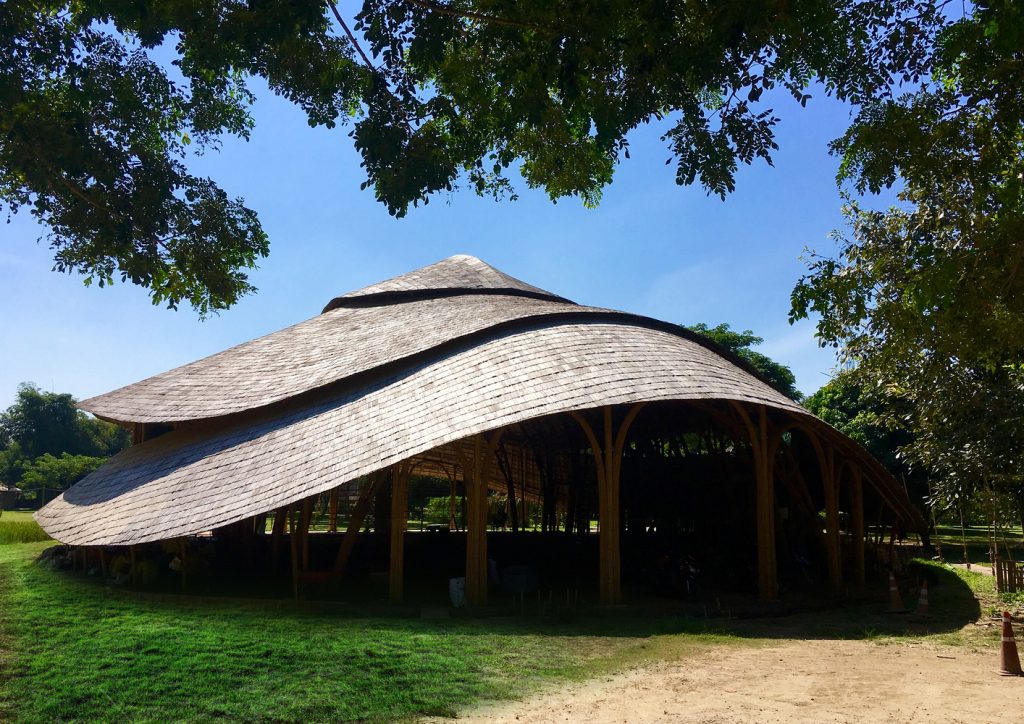
Bamboo Sports Hall for Panyaden International School by Chiangmai Life Architects. Ph: Markus Roselieb
Designed by Thailand-based Chiangmai Life Architects, Bamboo Sports Hall for Panyaden International School combines modern organic design, 21st century engineering and bamboo used to maintain the low carbon footprint.
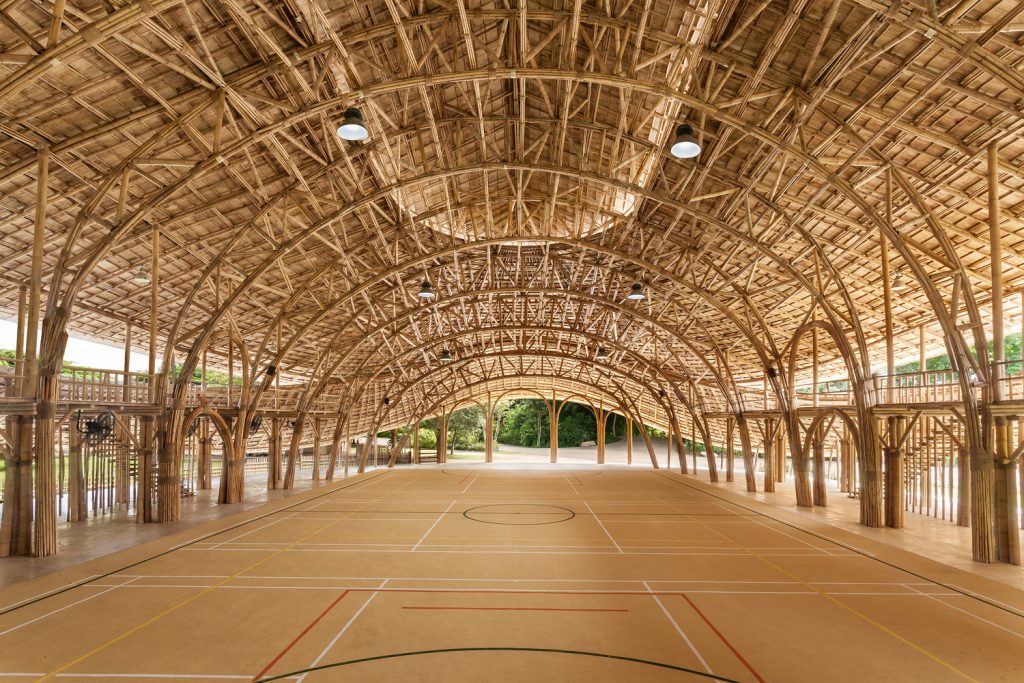
Bamboo Sports Hall for Panyaden International School by Chiangmai Life Architects. Ph: Alberto Cosi
Designed to resemble on the lotus flower, the hall is big enough to hold 300 students and hosts futsal, basketball, volleyball and badminton courts, as well as an automatically lifted stage.
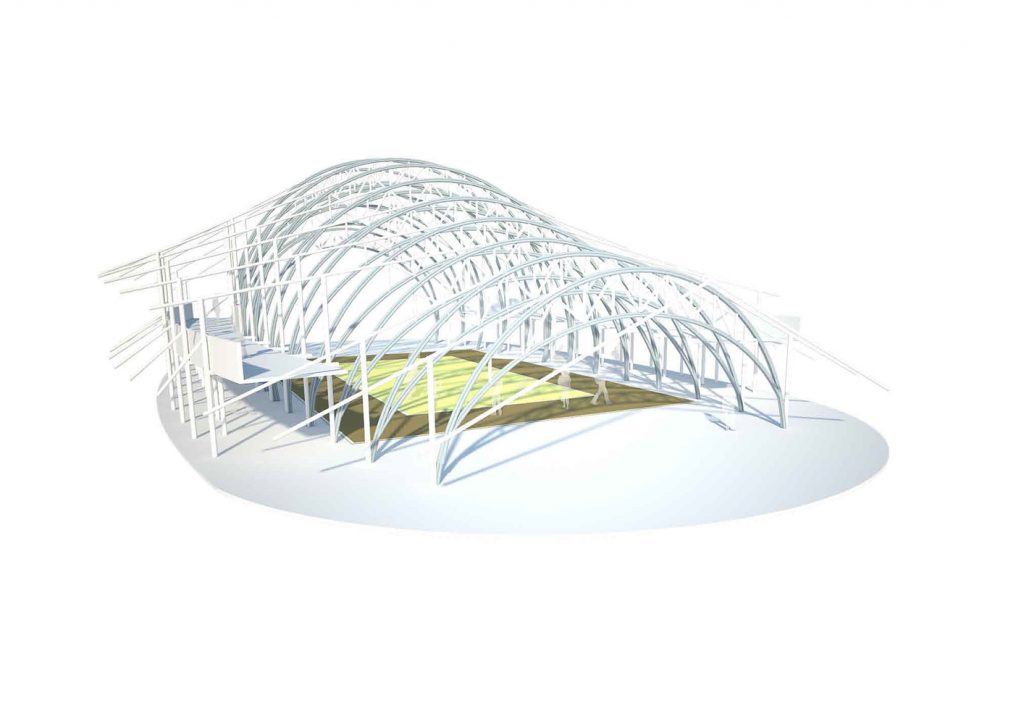
Bamboo Sports Hall for Panyaden International School by Chiangmai Life Architects
The innovative structural design without steel reinforcements or connections and bamboo as the main construction material provide natural ventilation and insulation and compiles with modern safety standards to withstand the local high-speed winds and earthquakes. The life span of the bamboo hall is expected to be at least 50 years.
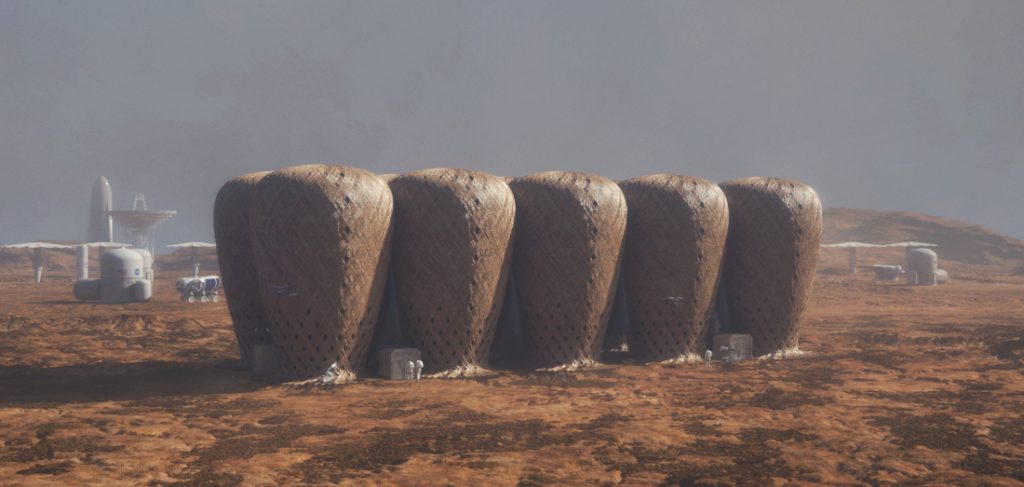
Colony on Mars by Warith Zaki and Amir Amzar (via Archdaily)
According to Archdaily, designers Warith Zaki and Amir Amzar have even suggested to use bamboo as an alternative material to build the first settlements on Mars which could compete with wood, brick and concrete. Entitled Martian S.O.L (Seed of Life), the imagined project is based on the fact that bamboo can be light enough to be transported to Mars, while the plant can withstand the harsh conditions on the Red Planet.
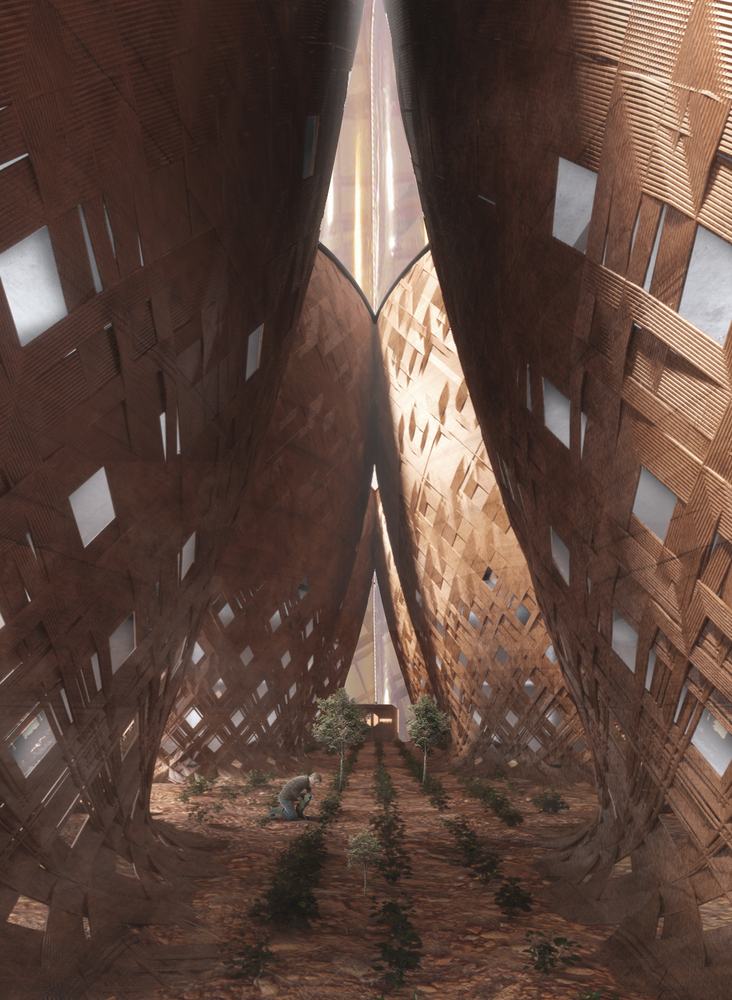
Colony on Mars by Warith Zaki and Amir Amzar (via Archdaily)